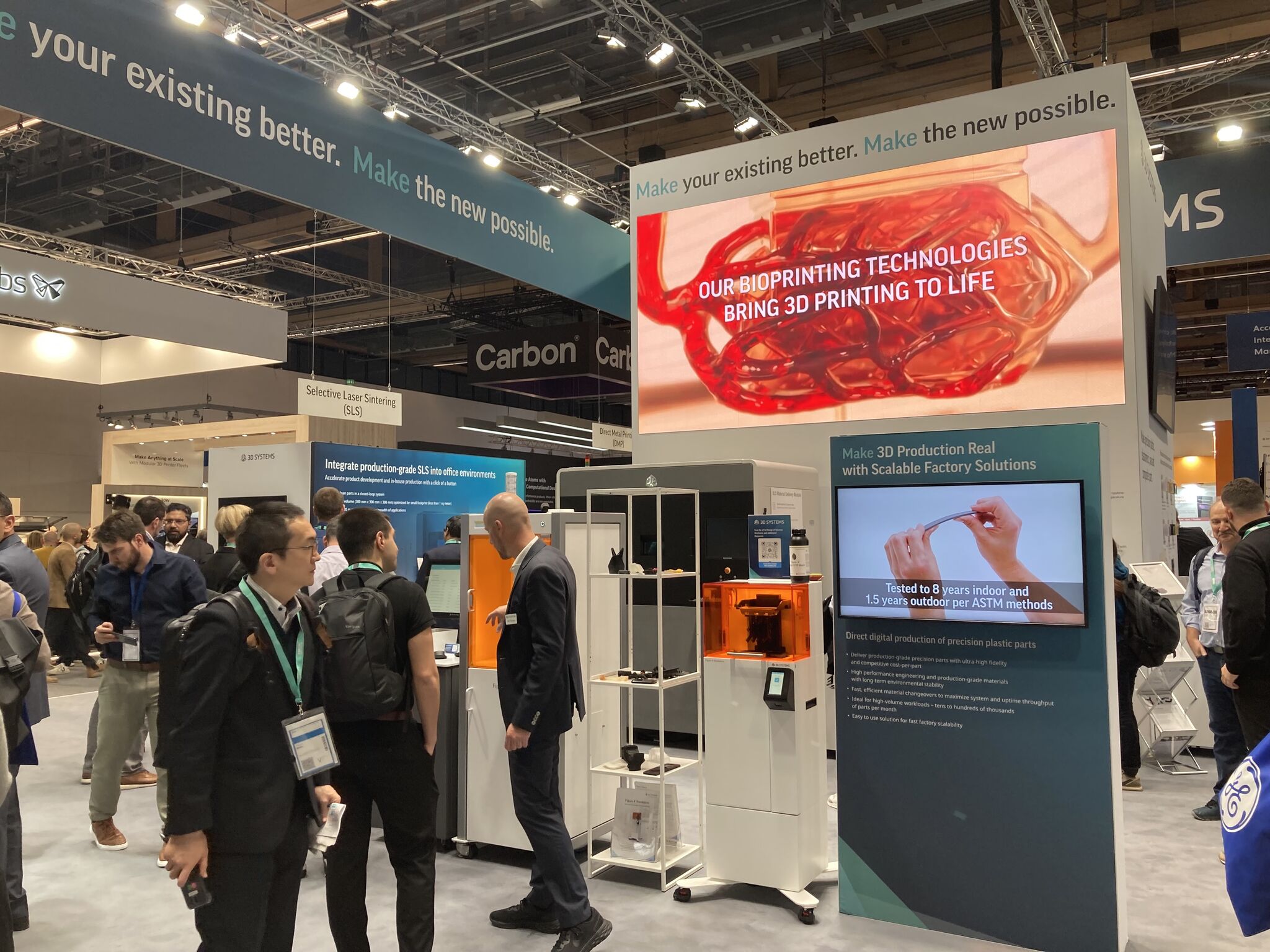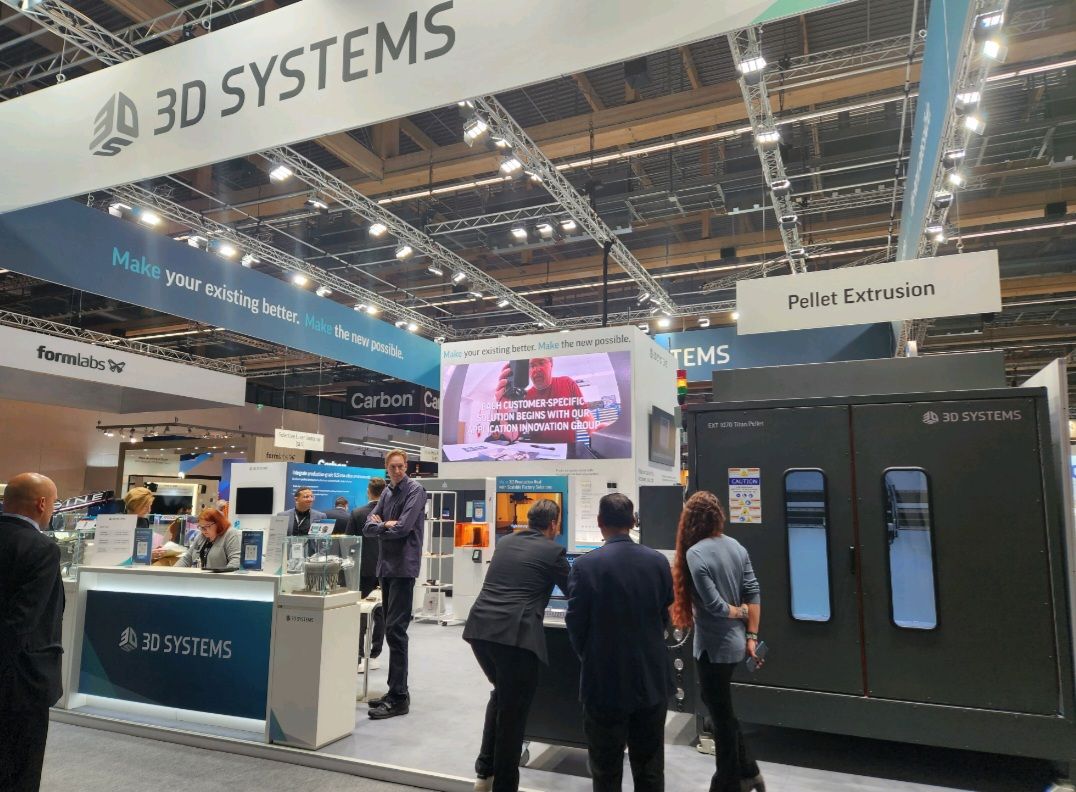Just as 3D Systems (NYSE: DDD) had anticipated in its preliminary results last October, the company has unveiled its financial performance for the third quarter ending on September 30, 2023. The latest figures provide insights into the company’s performance and strategic moves amid a challenging economic landscape, including a restructuring initiative to save up to $55 million by 2024, which includes workforce reductions and optimizing geographic locations.
Third-quarter earnings saw 3D Systems’ revenue at $124 million, a 6.4% decline from the previous year. This decrease was primarily attributed to difficulties in the dental orthodontics markets and, more generally, in new production printer sales.
Market turbulence
During an earnings call with investors, CEO Jeff Graves indicated that while management had anticipated the softness in dental, the printer sales shortfall was greater than expected, particularly late in the quarter as tensions in the world increased significantly as the war in the Middle East unfolded. These broader macroeconomic and geopolitical uncertainties have led customers to delay capital spending on new production capacity, impacting the adoption of advanced production technologies like 3D printing.
Additionally, Graves explained that this revenue decline was also affected by inflation, which has begun to impact consumer discretionary spending, affecting sales of products like clear aligners for orthodontic treatment.
“Moving forward, we anticipate the aligner market to stabilize, but with the continued need to reduce inventory in the supply chain and weakness in consumer discretionary spending,” remarked Graves. “We would anticipate a slower recovery in 2024 than expected earlier in the year. Offsetting this, to some extent, is the continuing migration of orthodontic solutions from metal brackets and wires to clear aligners. With the progress being made in materials and printing technologies, we anticipate the gain of overall market share for these solutions to continue and to provide more growth opportunities in the future.”
Dynamic landscape
However, it’s not all gloom. The gross profit margin for this quarter reached 44.7%, an improvement from the same period in the previous year. Better operational efficiencies and cost optimization mainly drove these gains. Interim CFO Andy Johnson pointed out that the operational efficiencies have started to “deliver a tangible impact evidenced in our current results.” He said it’s reasonable to expect a year-over-year improvement in gross margin performance for the fourth quarter.
Despite the challenges, 3D Systems also achieved an adjusted EBITDA (earnings before interest, taxes, depreciation, and amortization) of $4.7 million, demonstrating an increase from the prior year. This boost was primarily the result of improved gross margin performance, cost optimization stemming from restructuring efforts, and reduced incentive compensation expenses.
A technical milestone progress within the regenerative medicine business highly impacted the revenue margin and EBITDA performance. The company initiated a partnership in 2017 with United Therapeutics (Nasdaq: UTHR) to 3D print the human lung, the most complex structure ever attempted, aiming for human trials by 2026. Graves states recent progress in bioprinting precision and biomaterials has contributed significantly to these advancements. Graves even told investors that regenerative medicine is one of the “most exciting elements” of 3D Systems’ long-term growth portfolio.

3D Systems shares its bioprinting milestones at Formnext 2023. Image courtesy of 3D Systems via LinkedIn.
Charting a course
Looking ahead, 3D Systems has an ambitious technology roadmap in place. It’s gearing up to introduce 39 new printer systems, enhance existing printers, launch new materials applications, and introduce a range of accessories—all scheduled for release by the end of 2024. For example, it’s planning to launch high-temperature polymer and metal materials to expand customer applications, including rocketry and shipbuilding.
While Graves acknowledges the headwinds caused by the current macroeconomic and geopolitical environment, he remains optimistic that these challenges will ease up in the short to medium term. He imagines a future where sustained long-term growth will be possible, not just for 3D Systems but for the entire 3D printing industry.
“The rapid rise and higher-for-longer interest rate expectations, combined with the macroeconomic risk factors, have created a challenging financing environment that’s weighing on the speed and decisiveness of customers to invest capital to bring AM more fully into the factory floor,” explains Graves. “To be clear, there’s no decline in interest and direction, just the rate at which capex is being approved at executive levels. While our larger customers have strong balance sheets, they’re conserving cash until the future is clearer. Smaller companies with weaker balance sheets are having to be even more careful.”
The restructuring initiative unveiled last October plans to result in cost savings ranging from $45 million to $55 million by the end of 2024. The initial focus will be optimizing operations and incremental headcount reduction of up to 10% across the entire organization, cost reduction with third-party contracts, and rationalizing geographic locations across all facets of the company. Johnson indicated that “these decisions are very difficult and not to be taken lightly” and that he expects restructuring severance cash costs to be between $4 million and $6 million. This move comes amid intense competition and acquisition attempts in the 3D printing industry, including Stratasys rejecting a bid from 3D Systems. The company’s actions reflect its strategy to position itself for long-term growth while navigating a rapidly evolving 3D printing market.
Subscribe to Our Email Newsletter
Stay up-to-date on all the latest news from the 3D printing industry and receive information and offers from third party vendors.
You May Also Like
Gorilla Sports GE’s First 3D Printed Titanium Cast
How do you help a gorilla with a broken arm? Sounds like the start of a bad joke a zookeeper might tell, but it’s an actual dilemma recently faced by...
Nylon 3D Printed Parts Made More Functional with Coatings & Colors
Parts 3D printed from polyamide (PA, Nylon) 12 using powder bed fusion (PBF) are a mainstay in the additive manufacturing (AM) industry. While post-finishing processes have improved the porosity of...
$25M to Back Sintavia’s Largest Expansion of Metal 3D Printing Capacity Since 2019
Sintavia, the digital manufacturing company specializing in mission-critical parts for strategic sectors, announced a $25 million investment to increase its production capacity, the largest expansion to its operations since 2019....
Velo3D Initiates Public Offering in a Bid to Strengthen Financial Foundations and Drive Future Growth
Velo3D (NYSE: VLD) has been among a number of publicly traded 3D printing firms that have attempted to weather the current macroeconomic climate. After posting a challenging financial report for 2023,...
































